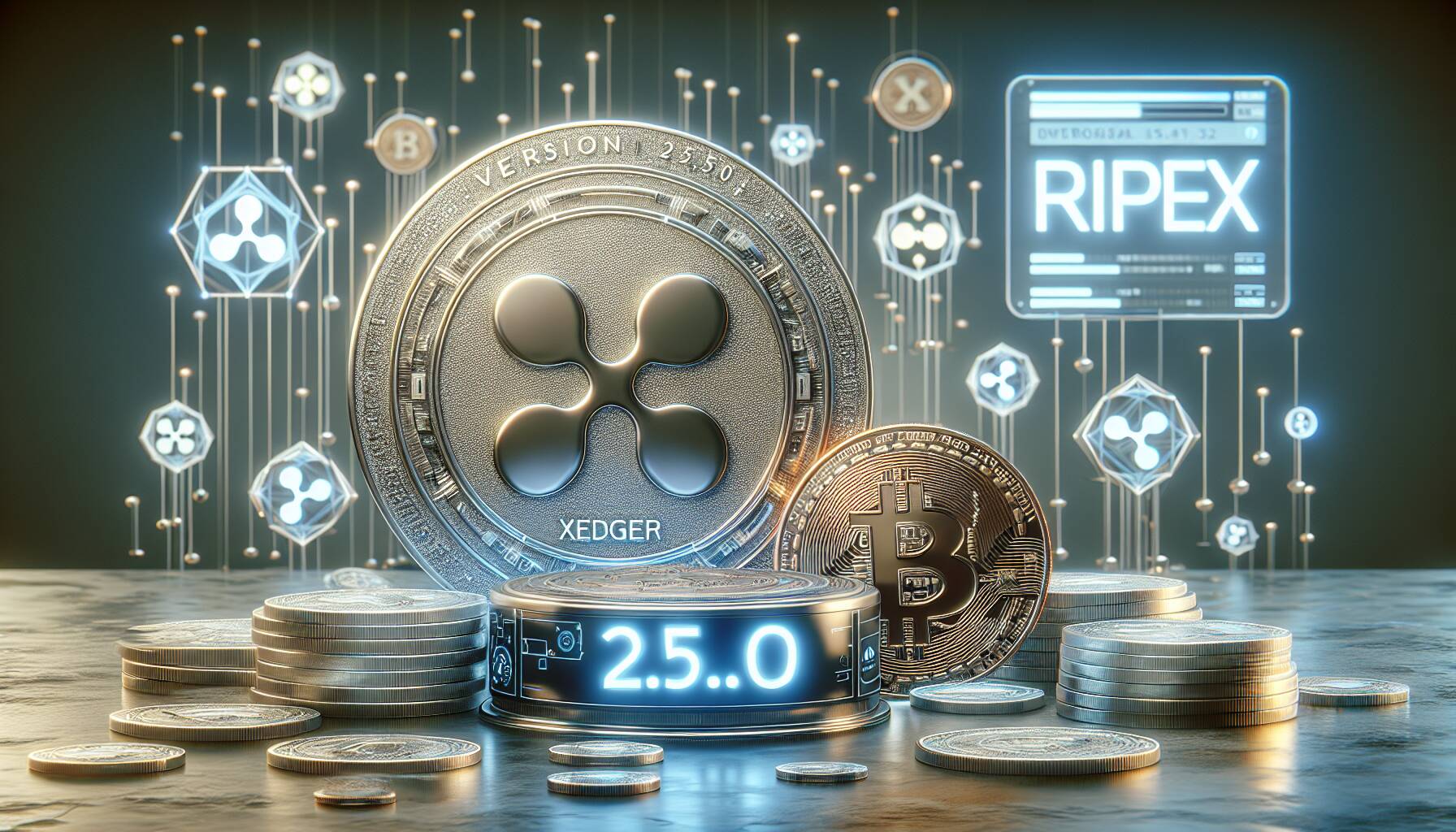RippleX has made a significant move in the cryptocurrency space with the release of version 2.5.0 of “rippled,” its cornerstone implementation of the XRP Ledger. This latest version introduces a host of enhancements designed to broaden the network’s capabilities and refine its governance tools, thus aligning with the increasing demands for regulated and efficient digital transactions.
The newly minted amendments are currently up for voting, a process that is integral to the XRP Ledger’s evolution and requires backing from over 80% of trusted validators within a two-week window for any protocol changes to take effect.
Among the seven amendments, “TokenEscrow” stands out, as it enables escrows for both IOU and multi-purpose tokens, adding another layer of utility to the platform.
Additionally, the “Batch” amendment facilitates the atomic execution of grouped transactions, enhancing operational efficiency. Meanwhile, “PermissionedDEX” provides decentralized exchange operators with the ability to regulate participation, a crucial feature for meeting compliance standards.
Another key addition, the AMMv1_3 amendment, implements invariant checks for automated market makers, which bolsters risk management at the protocol level. This enhancement acts as a safeguard, ensuring that important operational rules remain intact, particularly when handling financial transactions.
RippleX has also addressed two long-standing issues: EnforceNFTokenTrustlineV2 prevents unauthorized transfers of NFTs, and PayChanCancelAfter stops the accidental creation of expired payment channels.
The latest update is not solely about new features; it also improves the overall transaction relay logic, increases network I/O capacity, and enhances multi-signature simulation accuracy. Furthermore, XRPL Commons joins the project as a new Bootstrap Cluster, indicating a collaborative effort to foster a more robust and flexible platform.
In light of these updates, RippleX has urged validators to adopt the new version as swiftly as possible to maintain seamless service continuity. This update comes at a pivotal time as the XRP Ledger continues its journey toward becoming a more adaptable, compliance-focused platform that caters to both decentralized finance (DeFi) applications and enterprise developers who prioritize regulatory adherence.

RippleX Releases Version 2.5.0 of Rippled
The latest upgrade of the RippleX network presents significant enhancements for developers and users. Here are the key points:
- New Version Release:
- RippleX released version 2.5.0 of “rippled,” enhancing network functionality and governance.
- Amendments Open for Voting:
- Seven amendments are proposed and require more than 80% support from trusted validators for implementation.
- Key Amendments Include:
- TokenEscrow: Enables escrows for IOU and multi-purpose tokens.
- Batch: Allows atomic execution of grouped transactions.
- PermissionedDEX: Lets DEX operators control participation for regulatory compliance.
- AMMv1_3: Introduces invariant checks for tighter risk management in automated market makers.
- EnforceNFTokenTrustlineV2: Ensures that NFTs are only sent to authorized individuals.
- PayChanCancelAfter: Prevents the creation of old payment channels after expiration.
- Improvements:
- Enhanced transaction relay logic and network I/O capacity.
- Improved multi-signature simulation accuracy.
- Onboarding of XRPL Commons as a new Bootstrap Cluster.
- Urgent Upgrade Notice:
- Validators are urged to upgrade to ensure service continuity.
- Impact on Users:
- The upgrades promote a more flexible and compliance-aware platform, benefiting both DeFi users and enterprise developers.
RippleX’s Latest Release: A Game-Changer in the DeFi Landscape
RippleX’s recent update to the XRP Ledger with the release of version 2.5.0 of “rippled” positions it as a formidable player in the blockchain ecosystem. This version introduces significant amendments aimed at enhancing the network’s capabilities, especially targeting decentralized finance (DeFi) applications and regulatory compliance.
One of the standout features, the TokenEscrow amendment, is poised to attract developers interested in creating more sophisticated financial instruments. By enabling escrows for IOU and multi-purpose tokens, RippleX expands its functionality beyond traditional cryptocurrency transactions, making it appealing for enterprise users who prioritize regulatory adherence. However, this emphasis on compliance may deter some decentralized application (dApp) creators who favor a more liberated blockchain environment, fearing that increased governance may stifle innovation.
The introduction of the PermissionedDEX amendment underlines RippleX’s commitment to creating a responsible trading environment. This feature allows decentralized exchange operators to regulate participation as a means of complying with financial regulations, a move likely to reassure institutional investors. Yet, this emphasis on permissioning could alienate smaller traders who prefer anonymity and less oversight, thereby creating a potential divide in user engagement.
Furthermore, with the Batch transaction feature, RippleX enhances transaction efficiency, allowing for atomic execution of grouped transactions. This can attract high-frequency traders, providing them a competitive edge. Conversely, more casual users may not immediately recognize the benefits of this advancement, potentially leading to a perception that the platform favors larger operations over the everyday user.
The safety checks introduced in the AMMv1_3 amendment are a double-edged sword. While they tighten risk management, ensuring tighter governance around automated market makers, they may also introduce complexity that could deter new developers unfamiliar with these additional protocols. The nuanced understanding required for compliance could create barriers for entry in an already competitive landscape filled with agile and less regulated alternatives.
Finally, as RippleX calls upon validators to upgrade to the latest version promptly, the push for swift adoption may challenge some users and validators who are slower to adapt. This insistence on continuity might benefit enterprising firms looking to maintain their technological edge but could pose difficulties for those struggling with rapid changes in the infrastructure.
In summary, while RippleX’s latest updates largely benefit developers who are both DeFi-minded and compliance-oriented, they also risk pushing away users who thrive in a less regulated, more innovative environment. This dual-edged approach may reshape the dynamics of participation on the XRP Ledger, creating advantages for enterprise users at the expense of casual developers and traders.

















